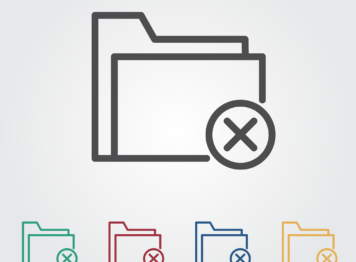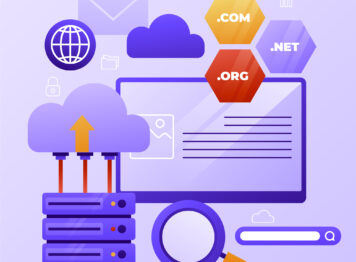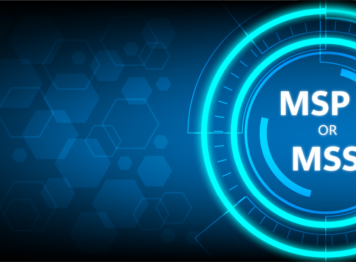Everything you need to know about dark web monitoring

In the digital age, one of the most significant threats to personal and business security is data theft. With the rise of the dark web, a hidden, mysterious part of the internet, this threat has become even more pronounced. It is here that stolen data often ends up, sold to the highest bidder, and used for nefarious purposes. This article delves deep into the concept of dark web monitoring, its importance, how it works, and why it’s necessary for both individuals and businesses.
Everything you need to know about dark web monitoring
Defining Dark Web Monitoring
The dark web is a part of the internet that isn’t indexed by standard search engines like Google or Bing. It’s a hidden network of websites that require special software, such as Tor (The Onion Router), to access. This part of the internet is infamous for its anonymity, making it a hotbed for illegal activities, including identity theft and data breaches.
Dark web monitoring, an essential part of any robust cybersecurity strategy, refers to the process of tracking and identifying breached data available on the dark web. As the term implies, it involves continuously scanning the dark web for personal or business information that has been stolen and is up for sale.
Dark web monitoring services search through numerous dark web sites, forums, and databases, looking for specific information related to an individual or a business. This could include personal details like Social Security numbers, credit card information, email addresses, passwords, and more.
The Importance of Dark Web Monitoring
In today’s digital age, personal information is more vulnerable than ever before. With frequent data breaches and the increasing sophistication of cybercriminals, personal and business data can easily end up in the wrong hands. This is where dark web monitoring comes into play.
By continuously scanning the dark web for your data, dark web monitoring services can provide an early warning if your sensitive information has been leaked or sold on this hidden part of the internet. Though it can’t retrieve the stolen data or prevent it from being sold, it does offer a preventative advantage.
Once a data breach is identified, it’s possible to implement strategies to mitigate the risk and take steps to prevent future breaches. Therefore, dark web monitoring is crucial for both businesses and individuals as part of a comprehensive online security service.
The Challenges of Dark Web Monitoring
Like with any tool or service, there are both benefits and challenges associated with using dark web monitoring:
- False Positives:
- Trustworthiness: Not everything found on the dark web is accurate or true. Some information might be intentionally misleading, out-of-date, or completely fabricated. Thus, differentiating between valid and invalid threats can be tricky.
- Overwhelming Alerts: A high number of alerts can sometimes lead to “alert fatigue.” If too many false positives are generated, it becomes easy for staff to become desensitized or overwhelmed, which could lead to them overlooking actual threats.
- Resource Intensiveness:
- Analysis: Once potential threats or data breaches are identified, it requires skilled personnel to analyze the data. This often demands a combination of cybersecurity knowledge and familiarity with the organization’s specific environment.
- Actionable Intelligence: After analyzing, the information must be transformed into actionable intelligence. Knowing that a potential threat exists isn’t enough; organizations need to know what to do about it.
- Relevance Determination: Only the organization itself can truly determine if the data collected is relevant to them. A third-party solution can’t always differentiate between benign and harmful information in the context of a particular organization’s operations.
- Price:
- Costly Solutions: Comprehensive dark web monitoring solutions can be expensive. Smaller businesses might find it challenging to justify the cost, especially when weighed against other cybersecurity priorities.
- Return on Investment (ROI): Evaluating the ROI of a dark web monitoring solution can be challenging, especially if no immediate threats are detected.
- Perceived Value:
- Lack of Alerts: If the system doesn’t produce any alerts, some stakeholders might question its value, thinking it’s not “doing anything.” However, a lack of alerts can be a sign that either the organization’s data hasn’t been compromised or the monitoring system is not comprehensive enough.
- Misunderstanding: There’s a misconception that no news is good news. While this can be true, it’s essential to differentiate between a genuinely secure environment and one that simply hasn’t detected threats yet.
- Additional Considerations:
- Legal and Ethical Concerns: Interacting with or monitoring the dark web can raise legal and ethical issues. For example, purchasing stolen data to verify its authenticity might be illegal in some jurisdictions.
- Dependence: Over-reliance on dark web monitoring can give a false sense of security. It should be just one part of a multi-faceted cybersecurity strategy.
- Evolving Landscape: The dark web is a dynamic and continuously changing environment. Monitoring solutions need to be adaptive and updated frequently to remain effective.
How Dark Web Monitoring Actually Works and why “Crawling” is not enough
Dark web monitoring employs a blend of manual and automated, sometimes AI-powered scans to monitor various dark web platforms, including chat rooms, blogs, forums, private networks, and other sites. The goal is to track an organization’s or individual’s sensitive data. But Dark web monitoring is a multifaceted task. While automated crawling can cover a substantial part of the publicly accessible dark web, many critical areas are not accessible by crawlers alone. Here’s why automated crawling is insufficient when it comes to comprehensive dark web monitoring:
- Access to Private Forums and Marketplaces:
- Many of the most sensitive discussions, transactions, and data breaches occur within private or invitation-only forums and marketplaces. These locations often require membership, specific credentials, or a certain level of reputation to access.
- Some forums require members to vouch for new entrants, adding an additional layer of security against outsiders.
- Anti-crawling Mechanisms:
- Just as with the surface web, many dark web sites employ anti-crawling and anti-bot measures to prevent unauthorized or automated access. These can range from CAPTCHAs to more sophisticated methods.
- Some sites employ “honey traps” or deceptive tactics to mislead or trap automated crawlers.
- Dynamic Nature of the Dark Web:
- The dark web is incredibly volatile, with sites and services frequently changing addresses or going offline to avoid detection. An automated crawler might miss these rapid changes, whereas human operators can adapt and seek out new access points.
- The decentralized nature of the dark web, especially with peer-to-peer networks, makes automated crawling challenging.
- Context and Interpretation:
- While a crawler can gather vast amounts of data, it doesn’t understand context. Human expertise is required to interpret nuanced discussions, slang, or coded language that might indicate a threat or breach.
- Understanding the significance of certain information in relation to a specific organization or industry often requires a human touch.
- Building Reputation and Trust:
- In many dark web communities, building trust and reputation is a time-consuming process that involves human interaction, making deals, or providing valuable information or services.
- Automated tools can’t replicate this process, as it often involves nuanced social interactions and understanding the unwritten rules of these communities.
- Operational Security (OpSec) Concerns:
- Engaging in dark web communities without revealing one’s identity or intentions requires careful operational security practices. This includes maintaining consistent aliases, understanding the cultural norms of the community, and using secure and anonymous browsing methods.
- An automated approach can’t adapt its behavior based on the social cues or potential threats in real-time as a human can.
When the monitoring service identifies data related to an individual or organization on the dark web, it triggers security protocols designed to limit the damage from that breach. Essentially, dark web monitoring services act as a proactive defense mechanism against potential cyber threats.
Evaluating the Worth of Dark Web Monitoring
A common question people ask about dark web monitoring is whether it’s worth the investment. After all, once information is on the dark web, it’s practically impossible to retrieve. However, the real value of dark web monitoring lies not in the retrieval of stolen data but in the power of awareness.
Early detection of a potential data breach can provide businesses and individuals with a crucial head start, enabling them to act before significant damage is done. Dark web monitoring can help in identifying these breaches early and taking necessary action to prevent further harm. Therefore, while it may not be able to eradicate the issue of data theft completely, it certainly is a powerful tool in the fight against it.
Beside early detection, there is another aspect: User Awareness Training. Incorporating data from dark web monitoring into user awareness training provides an evidence-based approach that can be more engaging and persuasive than hypothetical scenarios. By grounding training in real-world incidents and threats, organizations can heighten the perceived importance and relevance of cybersecurity practices among their employees. Dark web monitoring can uncover a treasure trove of information about the tactics, techniques, and procedures (TTPs) used by cyber adversaries. This information can be invaluable when incorporated into user awareness training programs. Here’s how:
- Real-world Examples: Use actual cases of compromised data found on the dark web to illustrate the gravity of security breaches. By presenting real incidents related to the organization or its industry, you can make the training more relatable and impactful.
- Highlighting Common Tactics: The dark web often provides insights into popular attack vectors, such as phishing methods or malware types. Using this data, awareness training can emphasize the most prevalent threats employees might encounter.
- Password Hygiene: If datasets of common passwords or password-cracking tools are discovered on the dark web, they can be used to demonstrate the importance of strong, unique password practices.
- Data Handling Practices: Presenting examples of sensitive data found on the dark web can emphasize the importance of proper data handling, storage, and transmission practices.
- Understanding the Value of Data: Employees might not always recognize the worth of the data they handle daily. Showing examples of how such data is sold or bartered on the dark web can drive home the point of why data protection is essential.
- Social Engineering Techniques: Dark web forums often discuss successful social engineering tactics. Highlighting these can help employees recognize and guard against such attempts.
- Case Studies: Develop case studies based on real incidents sourced from dark web findings. These can illustrate the sequence of events leading to a breach, emphasizing where human error played a part and how it could have been avoided.
- Interactive Scenarios: Create interactive training scenarios or simulations using information from the dark web. For instance, a phishing simulation based on an actual dark web-sourced phishing campaign can test employees’ ability to spot and report suspicious emails.
- Updates on Latest Threats: Dark web monitoring can keep the organization updated on the latest cyber threats. Integrating this information ensures that awareness training remains current and relevant.
- Reinforce Consequences: Highlight the repercussions of data breaches, both for the organization and the individual. This can include financial penalties, loss of reputation, and even potential legal consequences.
- Encourage Reporting: Use examples from the dark web to emphasize the importance of timely reporting of suspicious activities. Showcase instances where early reporting could have prevented a larger breach or security incident.
The Types of Data Found on the Dark Web
The dark web is a hub for various types of data, most of which are obtained illegally. Typically, you will find the following types of data being monitored on the dark web:
- Usernames and passwords: These login credentials can give cybercriminals access to a business’s network and sensitive data.
- Personally identifiable information (PII): This includes names, addresses, Social Security numbers, and more, which can be used to commit identity theft and other forms of fraud.
- Email addresses: Cybercriminals can use stolen business email addresses for phishing attacks or spamming.
- Financial information: This includes credit card numbers, bank account information, and other financial data that can be used for fraudulent purchases or identity theft.
- Digital certificates: These are used to secure communications between employees and clients and can be stolen and sold on the dark web, allowing cybercriminals to intercept confidential conversations.
- Technical Vulnerabilities:
- Shodan Listings: Shodan is a search engine that lets users find specific types of internet-connected devices, including those that may be vulnerable. Organizations can use dark web monitoring to see if any of their devices or services are being discussed or targeted based on Shodan findings.
- Vulnerability Disclosures: Discussions or postings about newly discovered software or hardware vulnerabilities, often before they’re widely known to the public or vendors.
- Source Code and Configuration Exposures:
- Code Repositories: Monitoring for accidental exposure of sensitive code, API keys, or configurations on platforms like GitHub, GitLab, or Bitbucket.
- Paste Sites: Websites like Pastebin or Gist where users can share plain text data, which sometimes include accidentally or maliciously posted sensitive information.
- Cloud Exposures:
- Open Cloud Containers: Exposure of data from cloud storage solutions such as Amazon S3 buckets, Azure blobs, or Google Cloud Storage when they’re misconfigured to be publicly accessible.
- Cloud Services Configuration: Information about misconfigured cloud databases, platforms, or services that may be inadvertently exposed.
- Link and Data Exposures:
- URL Shorteners: Exposed sensitive links that might have been inadvertently shared using link shortening services like Bitly or TinyURL.
- Data Dump Sites: Sites or forums where large datasets, often from breaches, are shared or sold.
- Intellectual Property:
- Trade Secrets: Monitoring for discussions or postings related to an organization’s proprietary information.
- Patents and Research Data: Information related to new research, unpublished patents, or any proprietary R&D data.
- Communication Data:
- Email Threads: Discussions or archives of internal organizational emails that might be leaked.
- Chat Logs: Excerpts or logs from internal chat systems or platforms.
- Operational Data:
- Internal Documents: Documents that detail internal processes, strategies, or plans.
- Network Diagrams: Information related to the internal network infrastructure, which can be invaluable for attackers planning an intrusion.
- Physical Threats:
- Building Blueprints: Digital copies of building plans or infrastructure, which can be used for physical security breaches or threats.
- Employee Information: Data that can be used for physical tracking or harm, such as home addresses or routines.
- Software and Tools:
- Malware and Exploit Kits: Monitoring for the sale or discussion of tools designed to target an organization’s specific software or hardware.
- Custom Software: Proprietary software that may be stolen and offered for sale or distribution.
- Insider Threats:
- Whistleblower Sites: Monitoring platforms known for whistleblowing for any data or discussions related to the organization.
- Employee Grievances: Forums or chat rooms where disgruntled employees might discuss internal matters or vent frustrations.
Benefits of Using Dark Web Monitoring Services
Several benefits come with using dark web monitoring services. Here are a few key ones:
- Proactive threat intelligence
Dark web monitoring services offer proactive threat intelligence, allowing users to stay ahead of emerging threats and protect sensitive data.
- Early detection of data breaches
These services can detect data breaches before they become major security incidents, providing users the chance to take action before the breach escalates.
- Reputation protection
By identifying potential threats early, businesses can take steps to mitigate them before they become public, helping safeguard the company’s reputation and maintain customer trust.
- Compliance
Dark web monitoring services can assist businesses in staying compliant with regulations requiring the protection of sensitive data, thereby averting potential legal issues or fines.
- Competitive advantage
By monitoring the dark web, businesses can stay informed about emerging threats, helping them maintain a competitive edge.
Consequences of Ignoring Dark Web Monitoring
Ignoring dark web monitoring can lead to various complications for businesses, including:
- Data breaches
When cybercriminals gain access to a company’s network using compromised credentials, they can steal sensitive information, resulting in significant financial losses and damage to the company’s reputation.
- Financial fraud
Cybercriminals can use stolen credentials to commit financial fraud, such as making unauthorized transactions or accessing company bank accounts.
- Ransomware attacks
Ransomware is a type of malware that encrypts a company’s data and demands payment to release it. Cybercriminals can use stolen credentials to gain access to a company’s network and deploy ransomware.
- Reputational damage
A data breach or other cyber attack can harm a company’s reputation, leading to lost business, possible legal action, and long-term damage to the brand’s image.
- Compliance violations
Several industries are subject to data protection regulations. Stolen credentials can lead to violations of these regulations, resulting in significant fines and legal action.
How Dark Web Monitoring Tools Work
Dark web monitoring tools continuously scan the dark web for any data that may be relevant to a business. This includes data such as employee credentials, credit card numbers, and other sensitive information that may be stolen and sold on the dark web.
Once the tool identifies any data related to the business, it performs a series of checks to determine if the data is legitimate and if it poses a risk to the business. If the data is deemed legitimate, the tool will generate an alert, notifying the business of the compromised data.
Traits of an Effective Dark Web Monitoring Tool
Choosing the right dark web monitoring tool can be challenging. However, here are the primary factors to consider when searching for a suitable tool for your business:
- Holistic coverage
A useful dark web monitoring service should provide comprehensive coverage of the dark web, including both public and private marketplaces, forums, and other online sources.
- Real-time alerts
A good monitoring service should provide real-time alerts when potential threats are detected. These alerts should be customizable to the organization’s specific needs.
- Customizable dashboards and reports
A monitoring tool should offer customizable dashboards and reports that allow users to view their data in a relevant manner.
- Actionable intelligence
An effective monitoring service should provide actionable intelligence that businesses can use to proactively mitigate threats and vulnerabilities.
- Integration with existing security infrastructure
A user-friendly monitoring service should seamlessly integrate with your business’s existing security infrastructure.
- Data privacy and security
A reliable monitoring service should have robust data privacy and security measures in place to protect the sensitive information being monitored.
Choosing the Best Dark Web Monitoring Vendor
Choosing the right vendor to provide dark web monitoring services is essential. Here are some factors to consider when evaluating potential vendors:
- Reputation and experience
Choose a vendor with a proven track record and extensive experience in the dark web monitoring space.
- Data privacy and security
Choose a vendor that demonstrates a strong commitment to data privacy and security.
- Customization and flexibility
Look for a vendor that can offer customized solutions to meet your specific needs.
- Pricing and support
Evaluate the vendor’s pricing structure and the level of support they offer.
Steps to Implement Dark Web Monitoring
Once you’ve chosen a dark web monitoring service and tool, here are some steps to start monitoring the dark web and protect your business data:
- Define your scope
Identify which data you want to monitor, such as your company name, domain, or sensitive information, to set up the right alerts and filters.
- Set up alerts
Configure alerts for your chosen keywords and data types. Set up real-time alerts via email or text message, so you can take action quickly if a threat is detected.
- Review reports
Regularly review reports generated by your monitoring tool. This can help you stay informed about emerging threats and identify potential vulnerabilities.
- Take action
If a threat is detected, take action immediately. This may involve contacting law enforcement, taking steps to protect your data, or communicating with your customers and stakeholders.
- Continuously monitor
Cyber threats are constantly evolving, so it’s important to continuously monitor the dark web for new threats and vulnerabilities. Regularly review your monitoring tool and adjust your alerts and filters as needed.
Safeguard Your Business Data with the Right Tool
The dark web remains a murky and dangerous place where criminal activity thrives. As technology continues to evolve, so do the methods and techniques used by cybercriminals to exploit the anonymity of the dark web.
However, by understanding the inner workings of the dark web, employing a variety of monitoring techniques, and staying up-to-date on emerging trends and threats, you can safeguard your digital assets.
Are you concerned about the safety of your organization’s information online? The right dark web monitoring tool can offer a powerful and easy-to-use platform for scanning the dark web and protecting your digital assets. Take advantage of a free trial and ensure the safety of your business data today!




